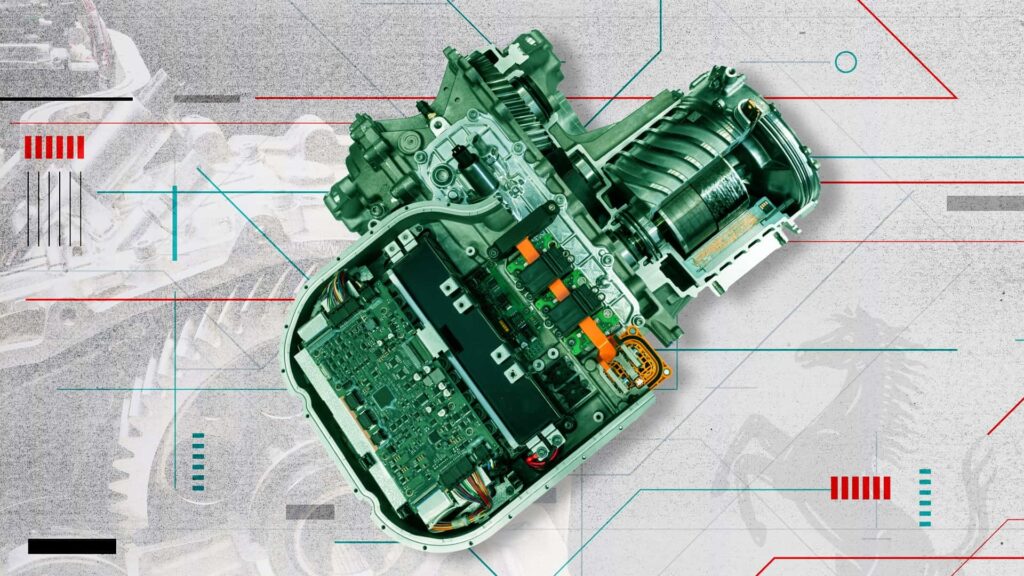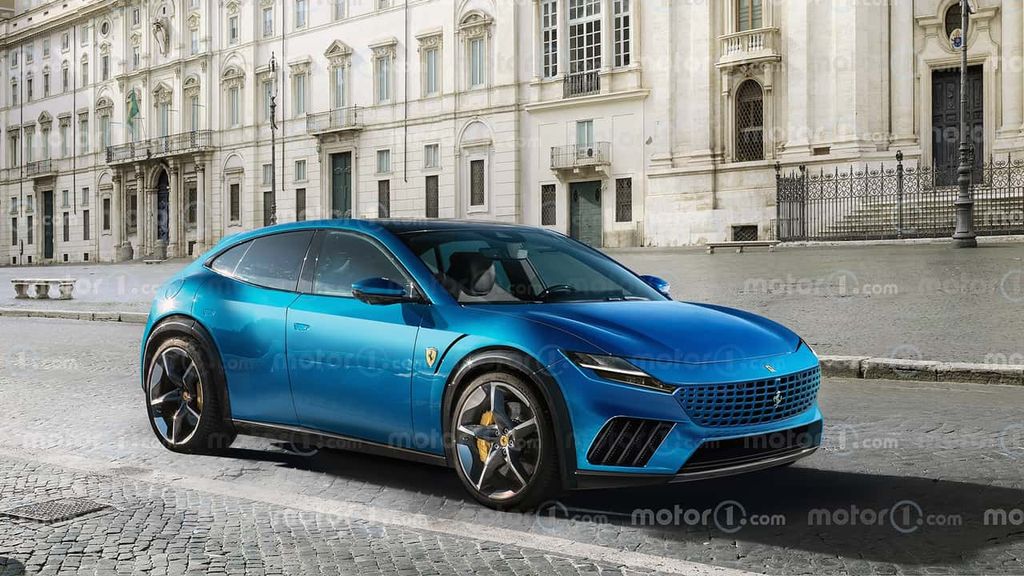Hyundai introduced the concept of simulated “shifting” in EVs. The riotous Ioniq 5 N simulates the soundtrack and shifting of the seven-speed, dual-clutch transmission version of the Elantra N. It sounds hare-brained, but it works. I love it.
Ferrari, though, can’t just copy Hyundai. With its first EV, the upcoming Elettrica, it’s gotta move the ball forward.
When I spoke to the company’s head of product development, he was clear about how the company was going to do that: With power levels, its own take on faux EV shifting. But it won’t be fake, and it won’t involve “gears.”

Hyundai’s “N Grin Shift” simulates the powertrain of an Elantra N, with a four-cylinder soundtrack and a faux transmission that imitates a seven-speed dual-clutch.
Photo by: Maddox Kay/InsideEVs
“When we started to develop the car, when we approached a corner, we started to play with the paddles,” Gianmaria Fulgenzi, Ferrari’s development boss, told me. Years of driving gas-powered cars has conditioned that behavior, but it’s not merely a relic. It adds something to the experience.
“You need something to touch when you want to engage the car,” Fulgenzi said. It’s not important when you’re cruising on the highway—which is why the upcoming Ferrari Electtrica will be silent and automatic in those conditions. “But when you want to enjoy it a little bit, you need something to connect with the car, to communicate with the car, to be completely engaged with the car.”
He’s absolutely right. I don’t usually directly chime in to support auto executives, but it’s the hardest thing to explain to people who have never driven a car fast—or hard. Shifting and sound are not mere relics of the internal-combustion era. They are, in their own way, tools.
An artist’s rendering of the upcoming Ferrari Elettrica.
Photo by: Ferrari
When you’re driving a car at a race track, you do not have the time or spare mental capacity to look down at your speedometer, which is typically swinging around wildly. You judge your speed by two factors: What gear you’re in, and how loud the engine is. Talk to track rats and you’ll never hear them describe speed as “top of second,” or a “third-gear” corner.
The redline shifts are a waypoint on your speed map. The same is true on a good back road too: a set of gears lets you apply finer control over the machine and the speeds it’s putting down. This isn’t to say you can’t do this with gear-free, linear EV acceleration and its instant torque, just that it’s a bit different.
These things help you reach a flow state while driving hard. That’s why Hyundai’s choice to merely port them over to the EV world was so brilliant. It took a sharp, fast EV and turned it into a true breakthrough, because for the first time in an EV I could lose myself in the all-encompassing feeling of driving on track.

Electric motors for the Ferrari Elettrica being assembled in Maranello, Italy.
Photo by: Ferrari
In a Porsche Taycan, I’d be nervously checking my speed, trying to align my senses to my ground speed, and not actively engaged in it building speed. But in an Ioniq 5, I knew exactly how fast I was going, and I was having to pay attention to my “gears” and “redline,” so I could begin the fun process of cautiously ramping up my speed. I was fully engrossed, having a blast.
Ferrari wants the Elettrica to offer that sort of all-encompassing, emotional experience. But it has a taller task. The company wants to do that without merely faking an ICE experience. It came up with its own solution, as of yet unnamed but focused on “power levels.”
“The very important thing is [that] it divides the torque and power levels. So we are designing five different levels that can be released in succession. So you can, let me say, during the ‘upshift,’ you can release the total power of the car in different ways, like gears,” Fulgenzi said.
To speed up, then, you’ll need to be timing your shifts right and engaged.
“When you approach a corner, you ‘downshift’ with the left paddle, so you have the emotional feel of an engine braking system that can create a natural experience that is completely connected to the body acceleration and also to sound that you can hear,” he said.
There’s the key. For all of the racket and annoyance of a gas engine, its assortment of gears and noises helps connect your gut to the rest of your senses. You hear and feel the speed vibrating through you; you experience its progression; you don’t just have to discern it from your eyes alone.
To match this, Ferrari is also adding noise to the EV cabin. It claims it’s not creating anything synthetic, but it certainly isn’t natural, either. Rather than pipe in a fully generated soundtrack, the company will amplify the true vibrations of the electric motor.
Using an accelerometer under the rear inverter, it captures the micro-vibrations of the motor as it spins up to its 25,000-rpm redline. It then amplifies it through a “proprietary algorithm” Ferrari is making, which surely sounds like something synthetic, but I’ll withhold judgment until I hear it.

The accelerometer for the car’s amplification system is mounted underneath this rear inverter.
Photo by: Ferrari
In fact, I am withholding judgment on the whole thing, for now. Ferrari is undoubtedly focused on real problems with performance EVs; the best one I’ve driven still can’t hold a candle to the analog perfection of a Mazda Miata or the utterly faultless Ferrari 296.
My experience in the latter tells me that this is a company primed to succeed here. Despite its plug-in hybrid powertrain, the 296s I’ve driven are more raw, direct and emotional than simpler supercars like the Lamborghini Huracan or McLaren 720S. This is a company that understands driving theater and sensations better than anyone else.
But like every other company, Ferrari is having to re-learn how to build compelling cars in the electric era. The company is asking the right questions, and, in my view, heading in the right direction. Until we see the final version, though, all I can say is it seems like a good idea.
Contact the author: Mack.Hogan@insideevs.com.


